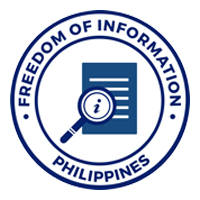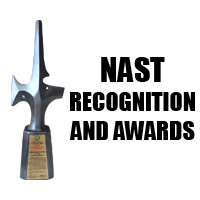National Academy of Science and Technology, Philippines
40th Annual Scientific Meeting
“SCIENCE AND TECHNOLOGY-ENHANCED TRANSFORMATION FOR SUSTAINABILITY AND RESILIENCY (2018-2030)”
Manila Hotel, Philippines; July 11-12, 2018
40th Annual Scientific Meeting
“SCIENCE AND TECHNOLOGY-ENHANCED TRANSFORMATION FOR SUSTAINABILITY AND RESILIENCY (2018-2030)”
Manila Hotel, Philippines; July 11-12, 2018
With over a thousand participants from across the country, the National Academy of Science and Technology, Philippines (NAST PHL) successfully held its 40th Annual Scientific Meeting (ASM) on July 11-12, 2018 at the Manila Hotel with the theme “Science and Technology-Enhanced Transformation for Sustainability and Resiliency 2018-2030)”.
The focus of this year’s ASM centered around the Philippine performance and achievements of the Millennium Development Goals (MDGs) and Sustainable Development Goal (SDG) initiatives in Clean Water and Sanitation (SDG no. 6), Affordable and Clean Energy (SDG no. 7), Decent Work and Economic Growth (SDG no. 8), Industry, Innovation and Infrastructure (SDG no. 9), Sustainable Cities and Communities (SDG no. 11), Responsible Consumption and Production (SDG no. 12), and Life on Land (SDG no.15) targeted for 2018-2030, with emphasis on the interrelatedness of these goals with the other SDG’s. The Biological Sciences Division, chaired by Rhodora V. Azanza, hosted this year’s Annual Scientific Meeting.
Academician Rhodora V. Azanza, president of NAST PHL, welcomed the participants and opened the event by giving updates regarding NAST’s recent efforts to help accelerate the achievements of the SDGs, particularly the conduct of Regional Scientific Meetings (RSMs) in Luzon, Visayas, and Mindanao, held prior to the ASM. These RSMs highlighted the performance and challenges of the regions and local communities in relation to the said SDGs. The Department of Science and Technology (DOST) Secretary Fortunato T. de la Peña delivered the opening remarks by showcasing various achievements such as the 8 young Filipinos who were included in the list of “top 100 scientists in Asia”, young students who won in international science competitions abroad. He reported that new scholarship grants include the project “DOST-SEI Bangon Marawi Program of Science and Technology Human Resource Development”. He also reported some strategies and programs that the DOST has implemented in line with Pres. Duterte’s desire to (1) reduce inequality, (2) create new opportunities, and (3) expand more potentials for growth. According to Secretary De la Peña, one way of reducing inequality in the science community is to expand the research and development pool to include those who are located in the universities and institutions in the different regions of the country.
Plenary Session 1
The series of plenary sessions was opened by Academician Jurgenne H. Primavera as she talked about climate change impacts on ecosystems. She also reported that the Philippines has been ranked the 3rd highest in the mismanagement of waste in the world. With this, she recommended organizing a symposium on Plastics in the Philippines and to push for both national and local regulations against single -used plastics. She also stressed that some earlier government programs on mangrove monoculture reforestation were not properly planned because wrong species were planted and therefore investment put into waste. She recommended replanting mangroves in abandoned ponds using assisted natural regeneration and recommended that the NAST should have a policy statement to correct Mangrove Reforestation.
Plenary Session 2
The second plenary session was opened with the talk of National Scientist Raul V. Fabella, chair of NAST Social Sciences Division, who discussed “Sustainable Industrialization and Inclusion”. He explained that the economy is characterized as domestic market -oriented and consumption- lead with non-tradable sector increasing while manufacturing becoming retarded. All of these result to slow growth, low investment, slow poverty reduction, which contributed to very unsustainable economy particularly in the past. He also emphasized that most victims in disaster- prone Philippines, are the marginalized sector of the society, who need more attention in the inclusive growth efforts of the country.
Plenary Session 3
Academician Guillermo Q. Tabios III of the NAST Engineering Sciences and Technology Division presented his paper on “Holistic Approach to Water Resources Development through Generations”. He highlighted the holistic approach for sustainable and resilient water resources development in the context of (1) linking science, policy and management decisions through decision support systems; (2) sustainability science; (3) transdisciplinary approach; and (4) evolutionary resilience. He showcased specific studies to relate the above holistic approach to actual water resources planning and management of the following systems: (1) Pasig-Marikina River Basin and West Mangahan Lakeshore Dike flood risk management; (2) New Centennial water supply project for Metro Manila; (3) San Roque Dam sedimentation study; and (4) Banaue Rice Terraces as an archetype of sustainable engineering design. He emphasized that more science-based projects on water resources development are needed in the country.
Assistant Secretary Rafaelita M. Aldaba of the Department of Trade and Industry, then discussed “Inclusive Industrial Strategy (i3S): Industry Priorities & Innovation Policy”. She stated that the Philippines is at risk due to low level of readiness for future production due to many obstacles to growth, such as weak linkage between industry and the academe, poor industry-based legislationand low talent pool, etc. She pointed out the need to strengthen “Go Local” program because Filipino buyers prefer buying imported goods. The program encourages the buyers to buy local products via improving the quality of the locally outsourced-products. In order to make the services industry be transformed to manufacturing industry, she said that there is a need for fusion of the two industries; She then recommended building more regional and local inclusive innovation hubs with focus on electronics, auto, aerospace, chemicals, IT-BPM, and agribusiness.
Plenary Session 4
The last paper, “Developing our Coastal and Oceanic Aquaculture for Food Security and Livelihood Generation” was discussed by Academician Rafael D. Guerrero III, member of NAST Agricultural Sciences Division. He started his presentation by giving an update on the 39th ASM Resolution. He reported that members of the committee (Academicians Porfirio M. Aliňo, Rafael D. Guerrero III and Eufemio T. Rasco, Jr.) visited the Panabo Mariculture Park in Davao del Norte on January 11, 2018 (with support of the NAST) to gather information and assess its programs and accomplishments. He then emphasized the need to create Fisheries- Aquaculture hubs where needs are all included from production to processing, etc. He suggested having a comprehensive and integrated program for the development of coastal and oceanic aquaculture in the country. The 39th ASM resolution advocating the creation of a Department of Fisheries and Oceans to fully harness our coastal and oceanic waters, should be considered by Congress.
Presentation of Research Results of NAST Awardees
The second day opened with the presentation of Dr. Rowena Cristina L. Guevara, Undersecretary for Research and Development of the Department of Science and Technology who presented the “DOST Funding Mechanism with Focus on Grants-in-Aid Program”. She reported that the Philippines lags behind Malaysia, Indonesia and Thailand in Global Competitiveness and Innovation Index. In terms of Gross Expenditure on Research and Development (GERD), our country spends 0.14% in 2013 and expected to increase to 0.5% by 2022. After the presentation of DOST 2017 accomplishments, she discussed the 2017 Harmonized R&D Agenda for 2017-2022 and the coverage of DOST-GIA funding assistance, mainly on R&D and provision of quality of S&T services. The current GIA budget is at its highest (5.9B). For the evaluation of research proposals, the 6Ps metrics (publications, patents, products, people services, places and partnerships, policies) are being required. She then cited some DOST R & D projects, a number of which are for commercialization. Some DOST highly funded projects were also shown like Phil-LIDAR, VIGORMIN, Hybrid Electric Train, BIOTEK-M Aqua Kit, Tuklas Lunas, among others.
Research results of NAST Oustanding Young Scientists (OYS) awardees that were funded by the Department of Science and Technology were presented . Dr. Rene A. Abesamis, OYS 2013 of the Siliman University-Angelo King Center for Research and Environmental Management, talked on “Connectivity of Coral Reefs and other Nearshore Habitats: Implications for Marine Resource Management in the Philippines”. Currently, there are 1000 Marine Protected Areas (MPAs) for 100M Filipinos and these MPAs do actually work. According to him, the Philippines need more of these MPAs since most of them are small, 3/10 are functional, and protecting only the coral reefs. To enable MPAs to become more functional, the linking of fish populations during their larval dispersal (larval connectivity) and adult movement (habitat connectivity) stages are primary considerations in the designing and implementing of marine reserve networks. From the OYS grant, research on habitat connectivity has been initiated to provide baseline information on this aspect. He suggested to create more “no take MPAs” that include mangroves, seagrass, macroalgal beds and coral reefs in a continuous swath, rather than in isolation and to protect marine reserves strictly and permanently to build up biomass.
Dr. Damasa M. Macandog, OYS 2014 of the University of the Philippines Los Baños then discussed her paper on “Impacts of land use change and an integrated assessment of vulnerability to flooding: The case of Sta. Rosa-Silang subwatershed”. She reported that rapid land use conversion and high population pressure impacted this type of subwatershed resulting in alternate drying up of streams and flash flooding during typhoons. Vulnerability assessment conducted via GIS-based hydrological models revealed that low-lying areas along the riverine system are most susceptible to flooding while sloping and open surfaces in the upstream areas are prone to soil erosion (landslides). Community-based physical and socio-economic vulnerability assessment, measures for climate change adaptation and mitigation were identified together by LGU officers. These included development control in high-risk areas; maintenance of green spare / urban greening and green building; strengthening building codes particularly in high risk areas; riverbank rehabilitation as well as river clean-up and dredging; and harmonization of Comprehensive Land Use Plans for integrated watershed management.
Dr. Kathleen B. Aviso, OYS 2013 preseted her paper on “Optimizing Resource Conservation Networks in Eco-Industrial Parks, from Barriers to Process Integration”. Dr. Aviso mentioned that, Industrial Symbiosis (IS) networks is already existing in various parts of the world and popularly represented by the eco-industrial Kalundborg Park of Denmark. Such strategy is meant to promote sustainability by supporting mechanisms for recycling and re-use within the industrial cycle, resulting in more efficient material and energy use (zero waste capability). For successful implementation of the latter, potential barriers, like lack of trust, lack of effective communication, confidentiality issues and support services among others, need to be identified. She then presented available methodologies through process system engineering (PSE) for identifying these barriers.
Dr. Raphael A. Guerrero, OYS 2013 of Ateneo de Manila University talked on “Volume Holographic Reconstruction of Bessel Beams Using Multiple Wavelengths”. Through a grant from Philippine Council for Industry, Energy and Emerging Technology Research and Development (PCIEERD), the Dr. Guerrero was able to assemble and develop in their photonics laboratory a new volume holographic method for generating self-imaging beam (Bessel beam). This novel method allows the production of periodic 3D intensity voids along a propagation distance of 55 cm. This may be used to create tailored beams for micromanipulation at suitable wavelengths, recording multiple optical potentials and volumetric lattices, and accessing of data at multiple planes in three dimensions. Bessel beam reconstructions using a plane wave reference for recording at yellow wavelength (594 nm) has revealed that the beam is self-healing.
The second day presentations were concluded by Dr. Clarissa C. David of the University of Philippines Diliman with her paper on “Narrative News Frames: Affective Processes as Mediators and Types of Issue as Moderator of News Framing Effects”. She emphasized that “framing” is a process to select some aspects of a perceived reality and make them more salient in a communication text so as to promote problem identification, causal interpretation, moral evaluation, and/or treatment recommendation. She mentioned that framing effects mechanisms are still under study and some are starting on cognitive mediation. Several examples in news headlines were then presented by Dr. David. A study on how types of journalistic framing choice for example on crime (tokhang) could possible do and on rice (quantitative restriction vs. tariffing) could influence approva/disapproval of the readers particular policies, were then discussed. Implications of the results showed that emotions elicited negative reactions, as in the case of the “narrative framing” in one “tokhang” report.
Concluding Session
National Scientist Edgardo D. Gomez started the closing ceremonies by presenting the attached resolutions to DOST Secretary Fortunato de la Peña, Undersecretary Epimaco V. Densing III of Department of Interior and Local Government (DILG), and Dr. Simplicia A. Pasicolan of Assistant Secretary DENR. Secretary de la Peña responded warmly by assuring that all recommendations on infrastructure, technology transfer and human resource development initiatives will be considered in the research and development of DOST. Undersecretary Densing responded by emphasizing that science as a foundation of technology is very important in the growth the Philippine economy. He also invited the national scientists, members of NAST and all local scientists to help not only in the rehabilitation of Boracay but all major tourist destinations in the country and to every Filipino to join the advocacy. On the other hand, Dr. Pasicolan of DENR responded by sharing DENR’s contributions and programs that are responsive to Ambisyon Natin 2040.
The Annual Scientific Meeting serves as the leading convention between the S & T experts, the industry and policymaking agencies, to translate research into social programs and future commercial products. Recommendations gathered from this activity are then forwarded to the concerned sectors of the Philippine government for their appropriate action.












